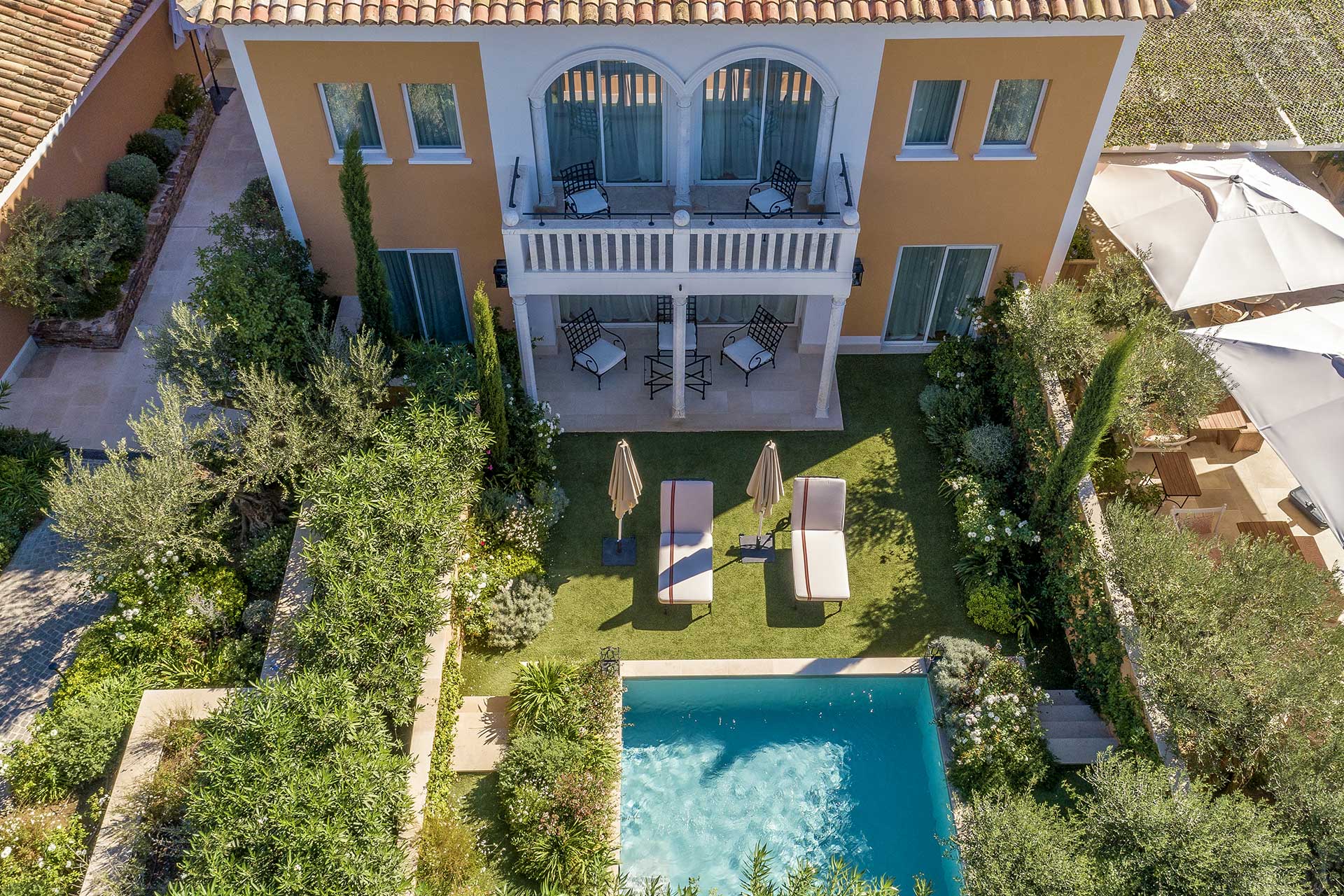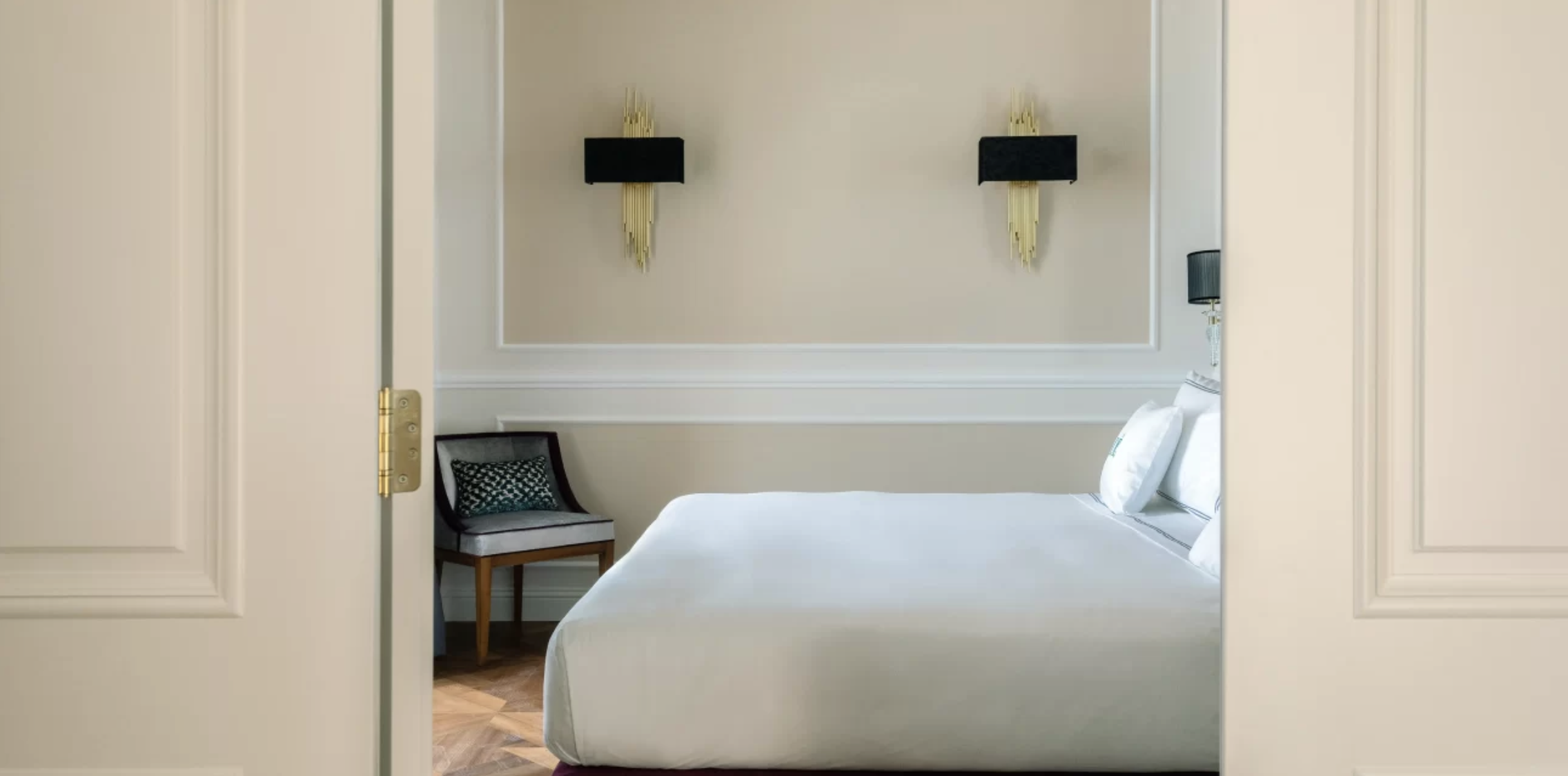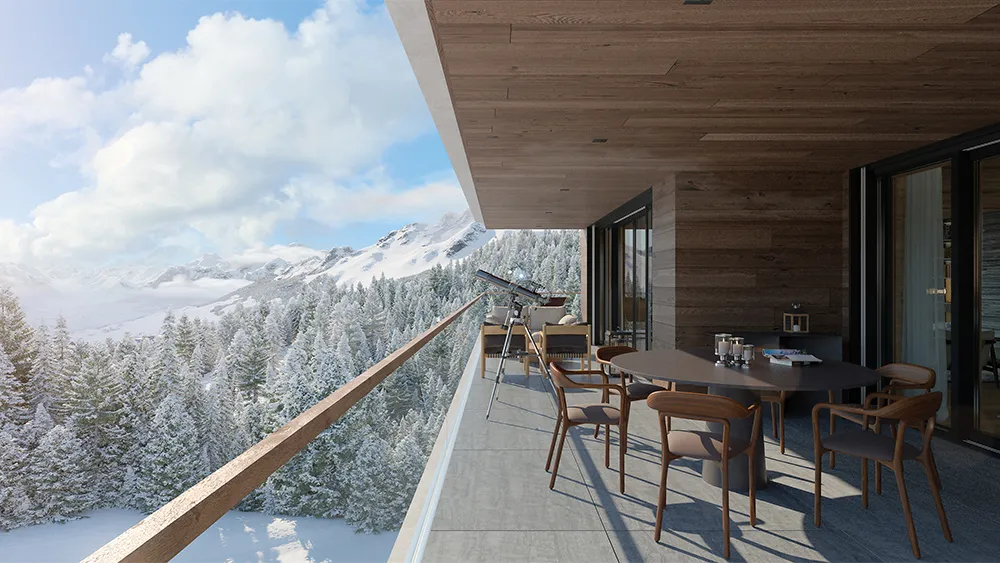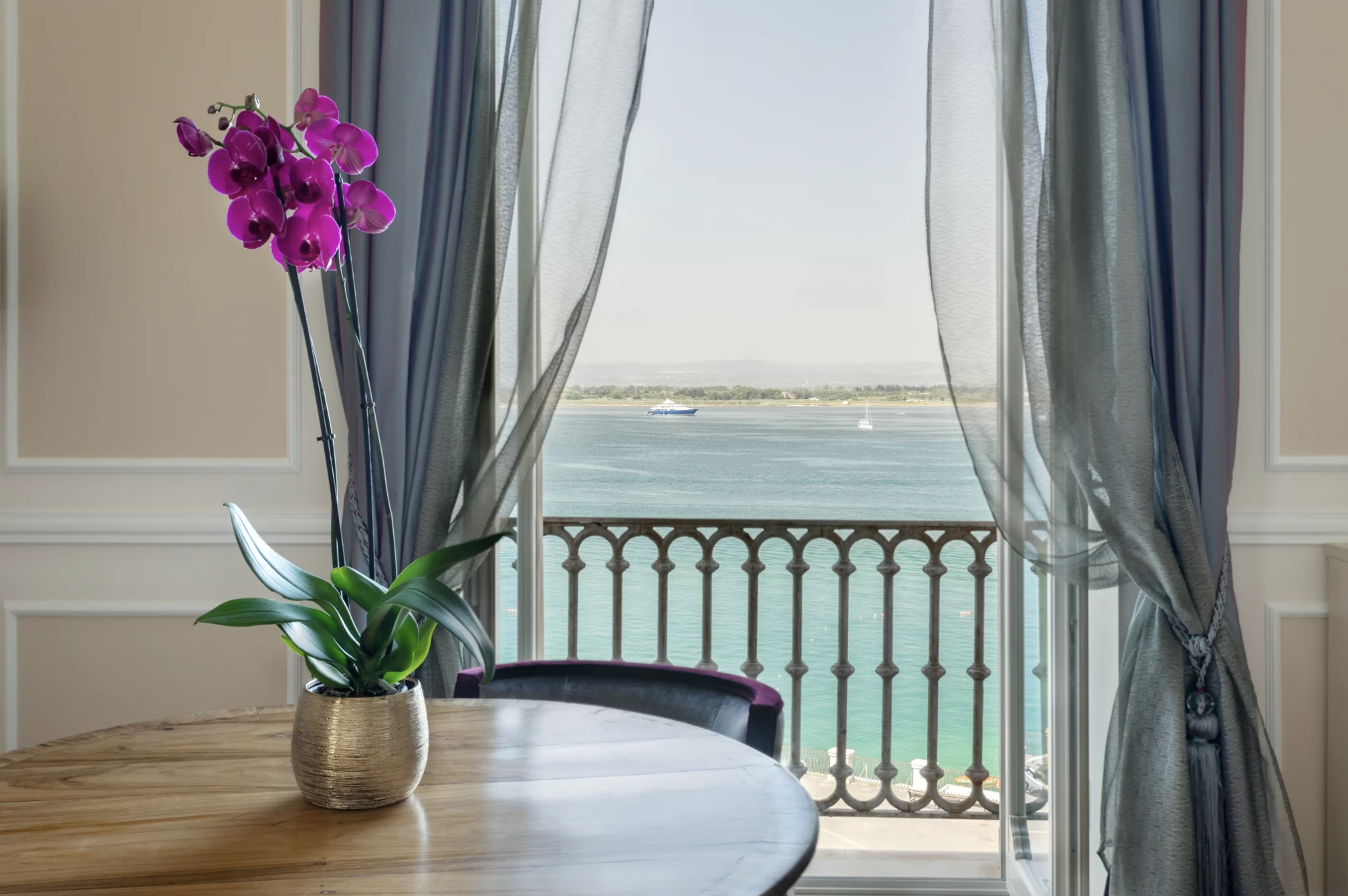
A Week Driving Through Provence
The ultimate French road trip awaits.
Related articles
The best thing to come out of the lockdowns was it prompting me to treat myself to a convertible. A new car, I posited, would offer some semblance of freedom, and one whose roof was optional might make sojourns in England’s home counties seem marginally more exotic. And with working from home still rife, there’s nothing like having been housebound all week to make one want to leave London in a shiny new cabriolet at weekends.
So off we’d go, wind in our hair, drizzle on our faces, to Goodwood, Osea Island or The Minack Theatre, ticking off the British road trips that might never have been experienced had it not been for an ever-shrinking travel corridor. Sadly the roof would usually come back on—often to a chorus of angry horns—around about the first set of traffic lights. Weather permitting, it would come off again with a mile or two to go, but this wasn’t the glamorous, freewheeling summer behind the wheel I’d had in mind. We’d be better off taking the vehicle to its natural habitat: the South of France.

Château d’Estoublon’s facade: welcoming at dusk Courtesy of Château d’Estoublon
As it happens, luxury hotel group Airelles had recently unveiled a new all-inclusive road-trip package between three of its properties in Provence. Airelles is a name that skiers may know—the French hotel brand boasts spectacular properties in Courchevel and Val d’Isére—but it’s only in the last couple of years that it has ventured south to sunnier climes. Indeed, Airelles has been in no rush to augment its portfolio of erstwhile palaces and châteaus, instead holding out for the right kind of historic properties.
Château d’Estoublon, the first official stop, is exactly that kind. After 1125km of dusty French countryside, we’re starting to wonder if maybe we should have just flown into Avignon and started there, but upon pulling into the pine-strewn driveway of this 15th-century masterpiece, flanked by olive groves and vineyards—the only estate in Les Alpilles that can boast both—it’s agreed that it was absolutely worth the lengthy drive and endless tolls.

Poolside (menu-free) dining Courtesy of Château d’Estoublon
In 2018, Airelles bought Château d’Estoublon from Valérie Reboul-Schneider, daughter of Ernest Scheider, former CEO of Breitling Watches, only a few years after she and her husband Rémy Reboul had finished transforming it from something close to a ruin. Today it’s billed as less of a hotel, and more of a 10-suite home, and it certainly feels that way when you’re the only guests there.
Yes, from time to time it’s possible to find yourself with the place to yourself. Or so Fred, the château’s butler, tells us while showing us the best of the estate’s 200 hectares. He spent much of his career heading up superyacht crews and runs this place in a similar fashion. There are no menus and very few formalities—just Fred’s spooky sense of exactly what, where and when you might like to eat or drink. In our case, that was usually the ceviche, the Roseblood d’Estoublon (the estate’s exquisite flagship rosé), by the pool, whenever Fred accurately sensed that we fancied it.

A lounge with a piano inside the property. Courtesy of Château d’Estoublon
Funnily enough, there is something strangely Cluedo-esque about the property—in a good way: think magnificent, high-ceilinged drawing rooms, vast, languorous lobbies and a suspicious number of conspiratorial alcoves. Hence, the château’s tireless wedding schedule. It also makes for the perfect place to unwind after a potentially arduous first leg. Because as beautiful as the surrounding area is—pastoral Provence in all its bucolic blissfulness, sunny, dry, and happening at an escargot’s pace—there isn’t a great deal to see or do, so just hanging out, eating and wandering the grounds can be done more or less guilt-free.
Which means, after a couple of days, guests can be ready for the next leg—an hour’s drive through Alpille National Park to the “Plus Beaux” village, as the guide books invariably describe it, of Gordes. It’s a hot, steady climb through serious wine country, punctuated by pungent lavender fields, the views getting increasingly dramatic as you approach the village’s medieval perimeter.

L’Horloger suite Courtesy of Château d’Estoublon
La Bastide du Gordes, our second stop, almost appears to be carved out of the cliffs atop the Monts of Vaucluse. It is a stately home that saw a steady stream of counts and duchesses pass through during the 18th century. Indeed, the château still boasts many of the riches of that time, with over 2,000 paintings, commodes and vases acquired by some of the region’s more adroit antiques dealers.
A couple of floors down, the state-of-the-art Sisley Spa continues to honour the hotel’s heritage and its setting with vaulted walkways carved out of the cliff, designed to recreate the atmosphere of the nearby Sénanque Abbey (built in the 12th century by Cistercian monks). The spa spills onto a delightful terrace replete with hanging gardens, possibly the most breathtaking spot in the hotel, especially if you indulge in a signature massage by the pool.

La Bastide du Gordes’ exterior Fabrice Rambert/Courtesy of La Bastide du Gordes
Except, that title actually belongs to the balcony table at La Citadelle restaurant. This is not only the best table in the hotel, but the whole of the town. In fact, I’d argue it might be one of the best tables in the whole of Provence. It certainly provides one of those rare “king of the castle” moments, with spectacular views down the Luberon valley, and plenty of envious looks from your fellow diners.
As the sun sets and you finish off an aperitif, the sky turns from crimson to an inky black, filled with vivid stars. Gordes has become something of a hotspot for astronomers, so expect to see one or two of the hotel’s guests erecting telescopes around the grounds. Naturally, La Citadelle fills up quite quickly, but the hotel’s other restaurants—L’Orangerie and Le TIGrr—both serve similarly delicious cuisine. Le Bastide de Pierres Market, a jolly little restaurant on the market square, also belongs to the hotel and offers front-row seats for an evening’s performances in front of the castle.

The main reception area Courtesy of La Bastide du Gordes
On Tuesdays, thousands turn up for Gordes Market—one of the most popular in Provence—where hundreds of colourful stalls sell beautiful fabrics, linens, soaps, lavender and clothing. Of course, it would hardly be France if you couldn’t also find some sensational saucisson, cheese and wine, so pack up a picnic and prepare for the next leg.
Like all good journeys, this one concludes by the water, in St Tropez no less, and the 200km drive there is one of the trip’s highlights. Sweeping canyons, winding mountain passes, thick forest, and—as you coast down from the Massif Des Maures—panoramic sea views will make this something of a stop-start journey (especially if your other half has a propensity for seeing every bend as another photo opportunity).

Chateau de la Messardiere Courtesy of Chateau de la Messardiere
On a hilltop overlooking the timeless Bay of Pampelonne, Château de la Messardiere is a statement of intent from Airelles, having recently undergone a transformative three-year renovation. Built-in the 19th century, and donated to the officer Henry Brisson de la Messardière and his wife (the artist Louise Dupuy D’Angeac) on their wedding day, the estate became a hotel in 1904, quickly establishing itself as the place to stay for travelling aristocrats throughout the Roaring ’20s. The renovation has revived that glamour and then some—they certainly weren’t chauffeuring guests to the hotel’s private beach, Jardin Tropezina, in Rolls-Royce Cullinans three years ago.
French architect and interior designer Christophe Tollemer is behind the transformation, principally removing 33 of the existing bedrooms in favour of larger rooms and suites, each with their own private terrace (look no further than the uber-chic Prestige Suite though). He’s done a similar number on the Palace of Versailles, Airelles’ latest and arguably most impressive opening. Indeed, it will be a welcome addition to this trip. Elsewhere, he has introduced a state-of-the-art 1,000 sqm Valmont spa, complete with seven treatment rooms, a cryotherapy chamber, hammam, sauna, indoor swimming pool and fitness centre.

The Grande Prestige Suite Courtesy of Chateau de la Messardiere
It’s here in St. Tropez that you can really unwind. After a week on the road you’ve more than earned an extended stay on the Riviera, so make yourself at home. Slip into something a little more elegant and head down to Matsuhisa Saint-Tropez, the hotel’s flagship restaurant, a partnership with world-renowned chef Nobu Matsuhisa. Find a table on the terrace with views of the Mediterranean, order the salmon sashimi tacos, and have a good think about how to get the car home. Repatriation is a no-brainer.
Château d’Estoublon is available for private hire for around $29,345 per week; nightly rates at La Bastide du Gordes start from around $877; nightly rates at Château de la Messardière start $1684 in a Classic Room.
Subscribe to the Newsletter
Recommended for you
You may also like.
06/05/2024
06/05/2024
30/04/2024
You may also like.
Best fo Europe: Six Senses, Switzerland
Mend in the mountains at Crans-Montana.
Wellness pioneer Six Senses made a name for itself with tranquil, mostly tropical destinations. Now, its first alpine hotel recreates that signature mix of sustainable luxury and innovative spa therapeutics in a world-class ski setting.
The ski-in, ski-out location above the gondola of one of Switzerland’s largest winter sports resorts allows guests to schuss from the top of the Plaine Morte glacier to the hotel’s piste-side lounge, where they can swap ski gear for slippers, then head straight to the spa’s bio-hack recovery area to recharge with compression boots, binaural beats and an herb-spiked mocktail. In summer, the region is a golf and hiking hub.

The vibe offers a contemporary take on chalet style. The 78 rooms and suites are decorated in local larch and oak, and all have terraces or balconies with alpine views over the likes of the Matterhorn and Mont Blanc. With four different saunas, a sensory flotation pod, two pools
and a whimsical relaxation area complete with 15,000 hanging “icicles” and views of a birch forest, the spa at Six Senses Crans-Montana makes après ski an afterthought.
You can even sidestep the cheese-heavy cuisine of this region in favour of hot pots and sushi at the property’s Japanese restaurant, Byakko. Doubles from around $1,205; Sixsenses.com
You may also like.
Best of Europe: Grand Hotel Des Étrangers
Fall for a Baroque beauty in Syracuse, Italy.
Sicily has seen a White Lotus–fuelled surge in bookings for this summer—a pop-culture fillip to fill up its grandes dames hotels. Skip the gawping crowds at the headline-grabbers, though, and opt instead for an insider-ish alternative: the Grand Hotel des Étrangers, which reopened last summer after a gut renovation.
It sits on the seafront on the tiny island of Ortigia in Syracuse, all cobbled streets and grand buildings, like a Baroque time capsule on Sicily’s southeastern coast.
Survey the entire streetscape here from the all-day rooftop bar-restaurant, Clou, where the fusion menu is a shorthand of Sicily’s pan-Mediterranean history; try the spaghetti with bottarga and wild fennel or the sea bass crusted in anchovies. Idle on the terrace alfresco with a snifter of avola, the rum made nearby.

As for the rooms, they’ve been renovated with Art Deco–inflected interiors—think plenty of parquet and marble—but the main asset is their aspect: the best of them have private balconies and a palm tree-fringed view out over the Ionian Sea. Doubles from around $665; desetranger.com
You may also like.
Watch of the Week: TAG Heuer Formula 1 | Kith
The legendary sports watch returns, but with an unexpected twist.
Over the last few years, watch pundits have predicted the return of the eccentric TAG Heuer Formula 1, in some shape or form. It was all but confirmed when TAG Heuer’s heritage director, Nicholas Biebuyck, teased a slew of vintage models on his Instagram account in the aftermath of last year’s Watches & Wonders 2023 in Geneva. And when speaking with Frédéric Arnault at last year’s trade fair, the former CEO asked me directly if the brand were to relaunch its legacy Formula 1 collection, loved by collectors globally, how should they go about it?
My answer to the baited entreaty definitely didn’t mention a collaboration with Ronnie Fieg of Kith, one of the world’s biggest streetwear fashion labels. Still, here we are: the TAG Heuer Formula 1 is officially back and as colourful as ever.
As the watch industry enters its hype era—in recent years, we’ve seen MoonSwatches, Scuba Fifty Fathoms, and John Mayer G-Shocks—the new Formula 1 x Kith collaboration might be the coolest yet.

Here’s the lowdown: overnight, TAG Heuer, together with Kith, took to socials to unveil a special, limited-edition collection of Formula 1 timepieces, inspired by the original collection from the 1980s. There are 10 new watches, all limited, with some designed on a stainless steel bracelet and some on an upgraded rubber strap; both options nod to the originals.
Seven are exclusive to Kith and its global stores (New York, Los Angeles, Miami, Hawaii, Tokyo, Toronto, and Paris, to be specific), and are made in an abundance of colours. Two are exclusive to TAG Heuer; and one is “shared” between TAG Heuer and Kith—this is a highlight of the collection, in our opinion. A faithful play on the original composite quartz watch from 1986, this model, limited to just 1,350 pieces globally, features the classic black bezel with red accents, a stainless steel bracelet, and that creamy eggshell dial, in all of its vintage-inspired glory. There’s no doubt that this particular model will present as pure nostalgia for those old enough to remember when the original TAG Heuer Formula 1 made its debut.

Of course, throughout the collection, Fieg’s design cues are punctuated: the “TAG” is replaced with “Kith,” forming a contentious new brand name for this specific release, as well as Kith’s slogan, “Just Us.”
Collectors and purists alike will appreciate the dedication to the original Formula 1 collection: features like the 35mm Arnite cases—sourced from the original 80s-era supplier—the form hour hand, a triangle with a dot inside at 12 o’clock, indices that alternate every quarter between shields and dots, and a contrasting minuterie, are all welcomed design specs that make this collaboration so great.
Every TAG Heuer Formula 1 | Kith timepiece will be presented in an eye-catching box that complements the fun and colour theme of Formula 1 but drives home the premium status of this collaboration. On that note, at $2,200 a piece, this isn’t exactly an approachable quartz watch but reflects the exclusive nature of Fieg’s Kith brand and the pieces he designs (largely limited-edition).

So, what do we think? It’s important not to understate the significance of the arrival of the TAG Heuer Formula 1 in 1986, in what would prove integral in setting up the brand for success throughout the 90’s—it was the very first watch collection to have “TAG Heuer” branding, after all—but also in helping to establish a new generation of watch consumer. Like Fieg, many millennial enthusiasts will recall their sentimental ties with the Formula 1, often their first timepiece in their horological journey.
This is as faithful of a reissue as we’ll get from TAG Heuer right now, and budding watch fans should be pleased with the result. To TAG Heuer’s credit, a great deal of research has gone into perfecting and replicating this iconic collection’s proportions, materials, and aesthetic for the modern-day consumer. Sure, it would have been nice to see a full lume dial, a distinguishing feature on some of the original pieces—why this wasn’t done is lost on me—and perhaps a more approachable price point, but there’s no doubt these will become an instant hit in the days to come.
—
The TAG Heuer Formula 1 | Kith collection will be available on Friday, May 3rd, exclusively in-store at select TAG Heuer and Kith locations in Miami, and available starting Monday, May 6th, at select TAG Heuer boutiques, all Kith shops, and online at Kith.com. To see the full collection, visit tagheuer.com
You may also like.
06/05/2024
06/05/2024
30/04/2024
8 Fascinating Facts You Didn’t Know About Aston Martin
The British sports car company is most famous as the vehicle of choice for James Bond, but Aston Martin has an interesting history beyond 007.
Aston Martin will forever be associated with James Bond, ever since everyone’s favourite spy took delivery of his signature silver DB5 in the 1964 film Goldfinger. But there’s a lot more to the history of this famed British sports car brand beyond its association with the fictional British Secret Service agent.
Let’s dive into the long and colourful history of Aston Martin.
You may also like.
What Venice’s New Tourist Tax Means for Your Next Trip
The Italian city will now charge visitors an entry fee during peak season.
Visiting the Floating City just got a bit more expensive.
Venice is officially the first metropolis in the world to start implementing a day-trip fee in an effort to help the Italian hot spot combat overtourism during peak season, The Associated Press reported. The new program, which went into effect, requires travellers to cough up roughly €5 (about $AUD8.50) per person before they can explore the city’s canals and historic sites. Back in January, Venice also announced that starting in June, it would cap the size of tourist groups to 25 people and prohibit loudspeakers in the city centre and the islands of Murano, Burano, and Torcello.
“We need to find a new balance between the tourists and residents,’ Simone Venturini, the city’s top tourism official, told AP News. “We need to safeguard the spaces of the residents, of course, and we need to discourage the arrival of day-trippers on some particular days.”
During this trial phase, the fee only applies to the 29 days deemed the busiest—between April 25 and July 14—and tickets will remain valid from 8:30 am to 4 pm. Visitors under 14 years of age will be allowed in free of charge in addition to guests with hotel reservations. However, the latter must apply online beforehand to request an exemption. Day-trippers can also pre-pay for tickets online via the city’s official tourism site or snap them up in person at the Santa Lucia train station.
“With courage and great humility, we are introducing this system because we want to give a future to Venice and leave this heritage of humanity to future generations,” Venice Mayor Luigi Brugnaro said in a statement on X (formerly known as Twitter) regarding the city’s much-talked-about entry fee.
Despite the mayor’s backing, it’s apparent that residents weren’t totally pleased with the program. The regulation led to protests and riots outside of the train station, The Independent reported. “We are against this measure because it will do nothing to stop overtourism,” resident Cristina Romieri told the outlet. “Moreover, it is such a complex regulation with so many exceptions that it will also be difficult to enforce it.”
While Venice is the first city to carry out the new day-tripper fee, several other European locales have introduced or raised tourist taxes to fend off large crowds and boost the local economy. Most recently, Barcelona increased its city-wide tourist tax. Similarly, you’ll have to pay an extra “climate crisis resilience” tax if you plan on visiting Greece that will fund the country’s disaster recovery projects.























